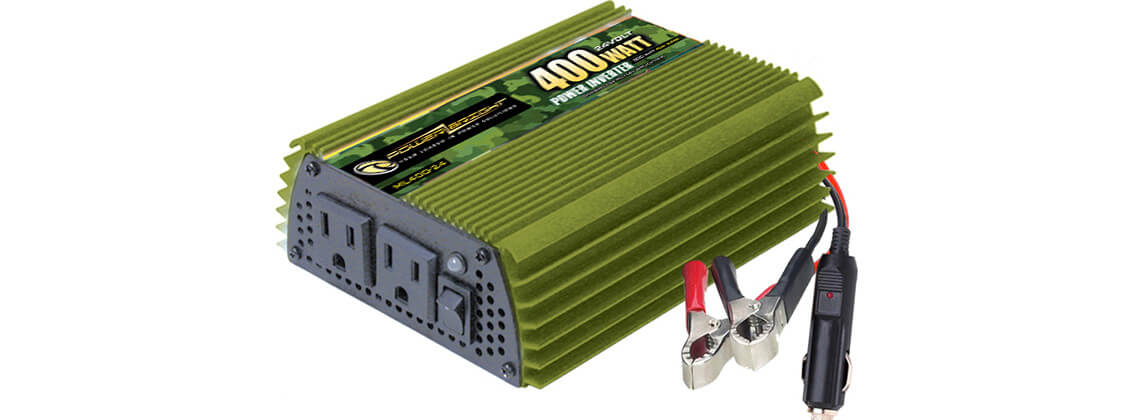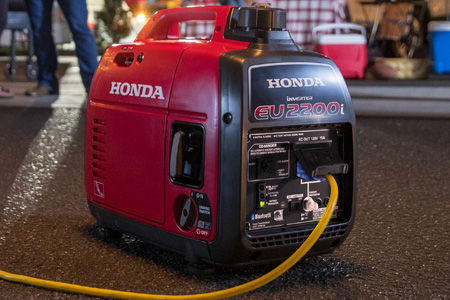To choose the best power inverter, consider the wattage needed for your devices and the type of inverter (modified sine wave or pure sine wave) that suits your appliances. Finding the right power inverter for your needs requires careful consideration of wattage requirements and the type of inverter that is compatible with your appliances.
:max_bytes(150000):strip_icc()/fiduciary-fcde6a47733d4ecea06b608b4966a531.jpg)
Credit: www.investopedia.com
Understanding Power Inverters
A power inverter is an essential device for converting DC power into AC power in order to supply electricity to various appliances. To choose the best power inverter, consider factors such as wattage, wave type, efficiency, and safety features. Make an informed decision to ensure optimal performance for your electrical needs.
What Is A Power Inverter?
Before delving into the intricacies of power inverters, let’s first understand what they actually are. A power inverter is an electronic device that converts direct current (DC) power from a battery or solar panel into alternating current (AC) power, which is typically used to operate household appliances, electronics, and other devices that require AC power to function properly.
How Does A Power Inverter Work?
Power inverters work on a simple yet fascinating principle. They utilize electronic circuitry to convert the low-voltage DC power, usually 12V or 24V, into high-voltage AC power, typically 110V or 220V, mimicking the power supplied by utility companies. This AC power is then fed into your devices, enabling them to function as if they were connected to a power outlet.
Different Types Of Power Inverters
There are several types of power inverters available in the market, each designed to cater to specific needs and requirements. It’s essential to understand the different types and their functionalities to choose the best power inverter for your specific application. Here are a few common types of power inverters:
| Type | Description |
|---|---|
| Square Wave Power Inverters | These inverters produce square wave AC output and are suitable for running simple devices like fans, lights, and basic electronics. |
| Modified Sine Wave Power Inverters | These inverters generate a modified sine wave AC output, which is a more refined version of square wave. They can handle most household appliances and electronics. |
| Pure Sine Wave Power Inverters | Considered the gold standard, pure sine wave inverters produce the cleanest and most stable AC output, making them suitable for sensitive electronics, medical equipment, and high-end appliances. |
Within these three main types, there are also variations based on power capacity, features, and portability. It’s crucial to assess your power needs and device compatibility to choose the appropriate power inverter.
In conclusion, understanding power inverters is crucial when selecting the best one for your needs. By comprehending the basics of power inverters, their functionality, and the different types available, you can make an informed decision and ensure a reliable and efficient power supply for your devices.
Factors To Consider When Choosing A Power Inverter
When looking for the best power inverter to meet your needs, there are several important factors to consider. These factors include power requirements, waveform type, portability and size, safety features, and input and output connections. By carefully evaluating these factors, you can ensure that you select a power inverter that will provide reliable and efficient performance.
Power Requirements
Before purchasing a power inverter, it is crucial to determine your power requirements. Calculate the total power consumption of the devices you plan to connect to the inverter, including any power surge or start-up requirements. This information will help you select an inverter with the appropriate wattage capacity to handle your power needs.
Waveform Type
The waveform type of a power inverter directly affects the quality of the power it produces. There are two main types of waveforms to consider: modified sine wave and pure sine wave. A modified sine wave inverter is more affordable but may not be suitable for sensitive electronics. On the other hand, a pure sine wave inverter provides a cleaner and more stable power output, making it compatible with all types of electronic devices.
Portability And Size
Depending on your intended use, portability and size can be important factors to consider when choosing a power inverter. If you plan to use the inverter in different locations or on the go, a compact and lightweight design will be more convenient. However, if the inverter will be permanently installed in a specific location, such as a vehicle or a home, you may prioritize other features over portability.
Safety Features
It is essential to prioritize safety when selecting a power inverter. Look for inverter models that come with built-in safety features such as overload protection, short circuit protection, and over-temperature protection. These features will safeguard your devices and prevent any potential damage or accidents from occurring.
Input And Output Connections
Lastly, consider the input and output connections of the power inverter. Check the compatibility of the input voltage with your power source, whether it is a DC source (such as a car battery) or an AC source (such as a wall outlet). Additionally, ensure that the output connections match the type of devices you need to power, whether they require AC outlets or USB ports.
Choosing The Right Power Inverter For Your Needs
When it comes to choosing the right power inverter for your needs, several factors should be considered to ensure you make the best choice. Determining your power needs, matching power requirements, considering future needs, budget considerations, reading reviews, and comparing brands, as well as looking into warranty and customer support, are all essential steps in making an informed decision. In this blog post, we will dive into each of these aspects in detail to help you select the best power inverter for your specific requirements.
Determining Power Needs
Before purchasing a power inverter, it is crucial to determine your specific power requirements. Consider the appliances and devices you intend to use with the inverter and their power ratings in watts. Make a list of all the devices and their individual power needs, including any additional starting power requirements. By knowing the total power needed, you can ensure you choose an inverter with sufficient capacity to handle your load.
Matching Power Requirements
Once you have determined your power needs, it is essential to select a power inverter that matches those requirements. Check the inverter’s power rating, typically mentioned in watts, to ensure it can handle the total power needed. Additionally, consider the inverter’s surge capacity, which indicates its ability to handle brief, high-power demands. Choosing an inverter with a surge capacity higher than your highest power requirement can help prevent potential damage to your devices during startup.
Considering Future Needs
While determining your current power needs is important, it is equally vital to consider your future needs. Are there any new devices or appliances you plan to add in the near future? Will your power requirements increase over time? By choosing an inverter with a slightly higher power capacity than your current needs, you can future-proof your setup and avoid the need for another purchase when your power demands increase.
Budget Considerations
When choosing a power inverter, it’s essential to consider your budget. Determine the maximum amount you are willing to spend while keeping in mind the features and quality you require. Research different brands and models within your price range to find the best value for your money. Remember that a higher price doesn’t always mean better performance, so be sure to evaluate each inverter based on its features and reviews.
Reading Reviews And Comparing Brands
Before making a final decision, it is crucial to read reviews and compare different brands of power inverters. Look for customer feedback on reliability, performance, and overall satisfaction. This step will give you valuable insights into the user experience, potential issues, and the quality of the product. Comparing multiple brands will help you identify the one that consistently receives positive reviews and has a track record of reliability.
Warranty And Customer Support
Lastly, don’t forget to consider the warranty and customer support provided by the manufacturer. A reliable warranty and responsive customer support can make a significant difference if you encounter any issues with your power inverter. Carefully review the warranty terms, its duration, and the processes involved in filing a claim. Additionally, ensure that the manufacturer has a reputation for providing prompt and helpful customer support for their products.

Credit: certifiedmtp.com

Credit: powerequipment.honda.com
Frequently Asked Questions Of How To Choose Best Power Inverter
How Do I Know What Power Inverter To Buy?
To know what power inverter to buy, consider your power needs, devices to be powered, and the inverter’s specifications. Assess the maximum power rating and the type of wave generated (pure sine or modified sine). Ensure it has enough outlets and proper voltage for your devices.
What Factors To Consider When Choosing An Inverter?
Consider the following factors when choosing an inverter: wattage requirements, input and output voltage compatibility, efficiency, waveform type, and additional features like surge capacity and safety certifications.
What Should I Look For In A Good Inverter?
A good inverter should have the following features: high efficiency, sufficient power capacity, reliable performance, safety features, and user-friendly design.
How Do I Calculate What Size Inverter I Need?
To calculate the size of the inverter you need, determine the total wattage of the devices you want to power simultaneously. Add up their individual wattages and choose an inverter with a capacity slightly higher than the total. Avoid starting sentences with specific phrases and use active voice.
Stick to maximum 20 words per sentence for easy readability.
Conclusion
In a nutshell, choosing the best power inverter for your needs requires a thorough understanding of your power requirements, device compatibility, and safety features. By carefully considering these factors, you can ensure a reliable and efficient power source for your electronic devices.
Remember to assess the power capacity, waveform type, and input/output connections to make an informed choice. Additionally, prioritize safety features such as overload protection and built-in cooling mechanisms. Investing in a high-quality power inverter will ultimately provide you with peace of mind and uninterrupted power supply.
